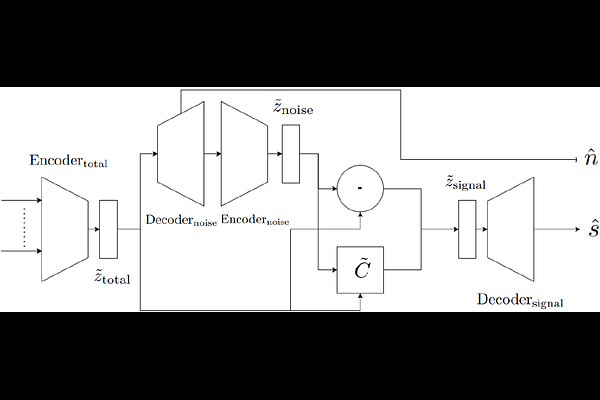Gravitational-wave background detection using machine learning

Gravitational-wave background detection using machine learning
Hugo Einsle, Marie-Anne Bizouard, Tania Regimbau, Mairi Sakellariadou
AbstractExtracting the faint gravitational-wave background (GWB) signal from dominant detector noise and disentangling its %diverse astrophysical and cosmological components remain significant challenges for traditional methods like cross-correlation analysis. We propose a novel hybrid approach that combines deep learning with Bayesian inference to identify and characterize the GWB more rapidly than current techniques. Our method utilizes a custom-designed multi-scale multi-headed autoencoder (MSMHAutoencoder) architecture to separate GWB signals from detector noise, and subsequently Marcov Chain Monte Carlo parameter estimation to disentangle the GWB components. Using simulated data representative of the LIGO-Virgo-KAGRA network at design sensitivity, we show that our MSMHAutoencoder can detect with high confidence (log noise Bayes factor of 3) a GWB from binary black hole mergers with fractional energy density $\Omega_{\text{BBH}} \approx 10^{-9}$ at 25 Hz. In the presence of such an astrophysical GWB, we can simultaneously measure a cosmological component as faint as $\Omega_{\text{Cosmo}} \approx 1.3 \times 10^{-10}$ using 47.4 days of training data.